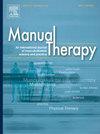A descriptive review of the somatic dysfunctions associated with myofascial chronic pelvic pain
引用次数: 0
Abstract
Myofascial pelvic pain is a major component of the chronic pelvic pain that is often not properly diagnosed by health care professionals. To fully understand the nature and function of the pelvic floor, it must be studied it in its most global aspect, taking into account numerous activities other than urological, gynecological, and intestinal ones: pelvic stabilization, participation in breathing, walking. It is necessary to consider the pelvic floor as a muscular-fascial unit with synergistic and antagonistic activity of muscle bundles, including more or less intertwined ones, with multiple functions, and not only with the function of closing the pelvic cup. Also, the pelvic floor muscles are connected to distant parts of the body, such as the feet and neck, through myofascial connections. Therefore, functional disorders in distant sites, such as flat feet, spasm of the respiratory diaphragm, or tension of the dura mater of the spinal cord, can lead to pelvic floor dysfunctions and musculofascial pain. In turn, pelvic floor dysfunctions will also affect the statics and dynamics of the body.肌筋膜慢性盆腔疼痛相关躯体功能障碍的描述性综述
肌筋膜性骨盆疼痛是慢性骨盆疼痛的主要组成部分,而医疗保健专业人员往往无法正确诊断。为了充分了解盆底的性质和功能,必须从最全局的角度对其进行研究,同时考虑泌尿、妇科和肠道以外的许多活动:骨盆稳定、参与呼吸、行走。有必要将盆底视为一个肌筋膜单元,具有肌束的协同和拮抗活性,包括或多或少交织在一起的肌束,具有多种功能,而不仅仅具有闭合骨盆杯的功能。此外,盆底肌肉通过肌筋膜连接与身体的远端部位相连,如脚部和颈部。因此,远处的功能紊乱,如扁平足、呼吸横膈膜痉挛或脊髓硬脑膜张力,可导致盆底功能障碍和肌肉筋膜疼痛。反过来,盆底功能障碍也会影响身体的静态和动态。
本文章由计算机程序翻译,如有差异,请以英文原文为准。
求助全文
约1分钟内获得全文
求助全文

 求助内容:
求助内容: 应助结果提醒方式:
应助结果提醒方式:


